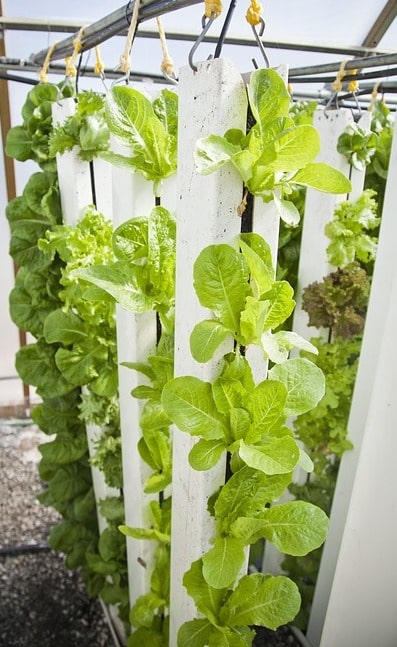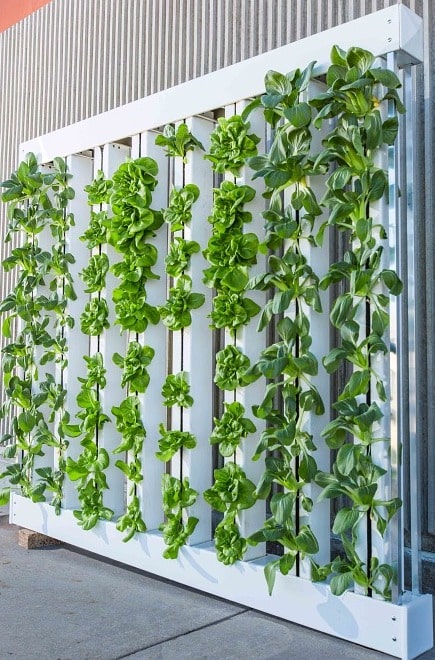A step by step guide for profitable crops for vertical farming and suitable for vertical cultivation
Do you want to know what crops are most suitable for vertical growing? then you should read the following information for profitable crops for vertical farming and suitable crops for vertical growing.
Vertical farming is the practice of producing food crop on vertically inclined surfaces. Vertical farming can ensure crop production year-round in non-tropical regions and the production is much more efficient than land-based farming. Vertical farms attempt to growing crops in challenging environments, like where arable land is rare or unavailable. Vertical farming includes hydroponics which uses 70 percent lesser water than normal agriculture.

How vertical farming works
There are four critical points in understanding how vertical farming works. They are;
- Physical layout,
- Lighting,
- Growing medium, and
- Sustainability features.
Initially, the primary goal of vertical farming is producing more foods per square meter. To achieve this goal, crops are cultivated in stacked layers in a tower life structure. Secondly, a perfect combination of natural and artificial lights is used to keep the perfect light level in the room. Technologies such as rotating beds are used to develop lighting efficiency.
Next, instead of soil, aeroponics, aquaponics or hydroponic growing mediums are used. Peat moss or coconut husks and similar non-soil mediums are very regular in vertical farming. Finally, the vertical farming method uses different sustainability features to offset the energy cost of farming. The vertical farming method uses 95 percent less water.
You may also like Sheep Farming Business Plan for Maximum Profit.
Types of vertical farms:
The vertical farming process comes in different shapes and sizes, from simple two-level or wall-mounted systems to large warehouses several stories tall. But all vertical farms use one of three soil-free systems for providing nutrients to plants they are hydroponic, aeroponics, or aquaponics. The following information describes the vertical farming growing systems:
Hydroponics vertical farming:
The main growing system used in vertical farms, hydroponics involves growing plants in nutrient solutions that are free of soil. The plant roots are submerged in the nutrient solution, which is regularly monitored and circulated to ensure that the accurate chemical composition is maintained.

Aeroponics vertical farming:
The National Aeronautical and Space Administration (NASA) is responsible for developing this innovative indoor growing method. In the 1990s, NASA was interested in finding efficient ways to produce plants in space and coined the term “aeroponics,” defined as “growing plants in an air or mist environment with no soil and very little water.”
Aeroponics systems are still an anomaly in the vertical farming world, but they are attracting important interest. An Aeroponic system is by far the major efficient plant-growing structure for vertical farms, using up to 90% less water than even the most efficient hydroponic systems. Plants produced in these aeroponic systems have been shown to uptake more minerals and vitamins, making the plants healthier and potentially more nutritious.
Aquaponics vertical farming:
An aquaponics system takes the hydroponic system one step further, join plants and fish in the same ecosystem. Fish are grown in ponds, producing nutrient-rich waste that is used as a feed source for the plants in the vertical farm. The plants, in turn, filter and clean the wastewater, which is recycled to the fish ponds.
You should also consider the Nutmeg Cultivation Project Report.
Crops suitable for vertical farming:
Let us discuss crops suitable for vertical farming are;
Plants and crops suitable for vertical farms are plants that develop well in moderately low light intensity, have a short cycle, and thrive at a high planting density. These plants are generally 30cm or shorter, such as leafy greens, herbs, medicinal plants or transplants, because the distance between vertical tiers generally is around 40cm (the optimum height for maximizing space usage).
Lettuces (Romaine, Butterhead, Red Leaf, etc.):
Lettuces have moderately consistent demand across much of the world and throughout the year. Lettuces are easy to grow in vertical farms. Lettuces are dozens of varieties of lettuce, making it fun to grow and offer to customers. It’s quick and easy to produce, inconsistent demand all year round and available in dozens of different varieties so that farmers can switch up their product from time to time without having to change to a whole new crop.
Kales (Tuscan, winter boar, and Dinosaur):
Kales are easy to grow, although the crop requires extra care when harvesting if farmers are to get the highest yield. Each type of kale has its variation on the taste and dark colors. The Tuscan kale is one of the most popular kale varieties.
Chard and collard greens:
Chard and Collard’s greens are like a thicker, deeper version of spinach. Like kale or collard greens, chard can be harvested multiple times that means taking only 30% of the plant each time and grows back for larger yields later on.
Chives and mint:
Chives and mint are some of the best vertical farming crops for beginners. Although categorized with herbs, both chives and mint have a quick turn and produce densely like grass. It is easy to harvest.
These herbs are some of the best crops for new vertical farmers to start with. Chives and mint alike are easy to care for, have quick turns, and are easy to harvest due to their dense, grass-like growing structure. Their distinctive flavors make them very popular with customers.
You should not miss the Hybrid Coconut Cultivation; Yield; Varieties.
Basil (Sweet, Lemon, Cinnamon, etc.)
Basil is maybe the most loved Zip Grow crop. It grows better in the Zip Grow Towers than any other method in the world and creates demand almost everywhere it goes. While a bit trickier to produce, harvest, and store, many farmers include basil in their crop offering.
In many ways, basil crop is an ideal crop for vertical farming. Basil is sensitive to cold temperatures and when grown conventionally in soil, basil is only available for a few months each year. So, it responds very well to the climate-controlled conditions of a vertical farming facility. Also, some studies indicate that hydroponically-grown basil is richer in flavor than field-grown basil because it contains 20 to 40% more oils.
Small woody herbs
Small woody herbs like rosemary, thyme, and oregano, represent a rather picky group of crops. As woody herbs, they desire “dry feet”, and have a relatively slow growth cycle.
That’s all folks about profitable crops for vertical farming and suitable crops for vertical cultivation.
You may be interested in Growing Zucchini Hydroponically.
Hi Jagdish, I believe vertical farming is the way to go for people in the cities and the future. I plan to start a farm soon. Thanks. Shahab
Hi Shahab, On deep studies i m also interested in vertical aeroponics farming. i hope u Have started
a farm. please share some achievements.
Thanks.
Can we grow saffron and vanilla on an aeroponic vertical farming? Please advise
Thank you
I farm in Zimbabwe(went to RAU) and aim to produce food for the local population but don’t have land.
Looking into how i can harness this farming method in Zimbabwe